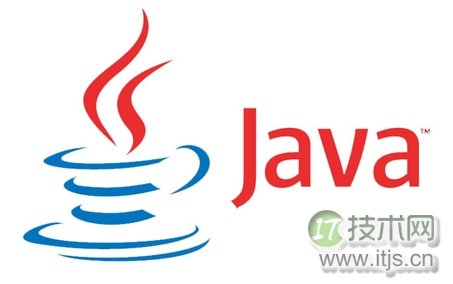面试的时候经常会遇见诸如:“java中的HashMap是怎么工作的”,“HashMap的get和put内部的工作原理”这样的问题。ITJS的这篇文章将用一个简单的例子来解释下HashMap内部的工作原理。首先我们从一个例子开始,而不仅仅是从理论上,这样,有助于更好地理解,然后,我们来看下get和put到底是怎样工作的。

我们来看个非常简单的例子。有一个”国家”(Country)类,我们将要用Country对象作为key,它的首都的名字(String类型)作为value。下面的例子有助于我们理解key-value对在HashMap中是如何存储的。
1. Country.java
package org.arpit.javapostsforlearning;
public class Country {String name;
long population;public Country(String name, long population) {
super();
this.name = name;
this.population = population;
}
public String getName() {
return name;
}
public void setName(String name) {
this.name = name;
}
public long getPopulation() {
return population;
}
public void setPopulation(long population) {
this.population = population;
}// If length of name in country object is even then return 31(any random number) and if odd then return 95(any random number).
// This is not a good practice to generate hashcode as below method but I am doing so to give better and easy understanding of hashmap.
@Override
public int hashCode() {
if(this.name.length()%2==0)
return 31;
else
return 95;
}
@Override
public boolean equals(Object obj) {Country other = (Country) obj;
if (name.equalsIgnoreCase((other.name)))
return true;
return false;
}}
如果想了解更多关于Object对象的hashcode和equals方法的东西,可以参考:
java中的hashcode()和equals()方法
2. HashMapStructure.java(main class)
import java.util.HashMap;
import java.util.Iterator;public class HashMapStructure {
/**
* @author Arpit Mandliya
*/
public static void main(String[] args) {Country india=new Country(“India”,1000);
Country japan=new Country(“Japan”,10000);Country france=new Country(“France”,2000);
Country russia=new Country(“Russia”,20000);HashMap<country,string> countryCapitalMap=new HashMap<country,string>();
countryCapitalMap.put(india,”Delhi”);
countryCapitalMap.put(japan,”Tokyo”);
countryCapitalMap.put(france,”Paris”);
countryCapitalMap.put(russia,”Moscow”);Iterator<country> countryCapitalIter=countryCapitalMap.keySet().iterator();//put debug point at this line
while(countryCapitalIter.hasNext())
{
Country countryObj=countryCapitalIter.next();
String capital=countryCapitalMap.get(countryObj);
System.out.println(countryObj.getName()+”—-”+capital);
}
}}
现在,在第23行设置一个断点,在项目上右击->调试运行(debug as)->java应用(java application)。程序会停在23行,然后在countryCapitalMap上右击,选择“查看”(watch)。将会看到如下的结构:

从上图可以观察到以下几点:
有一个叫做table大小是16的Entry数组。 这个table数组存储了Entry类的对象。HashMap类有一个叫做Entry的内部类。这个Entry类包含了key-value作为实例变量。我们来看下Entry类的结构。Entry类的结构:每当往hashmap里面存放key-value对的时候,都会为它们实例化一个Entry对象,这个Entry对象就会存储在前面提到的Entry数组table中。现在你一定很想知道,上面创建的Entry对象将会存放在具体哪个位置(在table中的精确位置)。答案就是,根据key的hashcode()方法计算出来的hash值(来决定)。hash值用来计算key在Entry数组的索引。 现在,如果你看下上图中数组的索引10,它有一个叫做HashMap$Entry的Entry对象。 我们往hashmap放了4个key-value对,但是看上去好像只有2个元素!!!这是因为,如果两个元素有相同的hashcode,它们会被放在同一个索引上。问题出现了,该怎么放呢?原来它是以链表(LinkedList)的形式来存储的(逻辑上)。static class Entry implements Map.Entry
{
final K key;
V value;
Entry next;
final int hash;
…//More code goes here
}
上面的country对象的key-value的hash值是如何计算出来的。
Japan的Hash值是95,它的长度是奇数。 India的Hash值是95,它的长度是奇数。 Russia的Hash值是31,它的长度是偶数。 France,它的长度是偶数。
下图会清晰的从概念上解释下链表。

所以,现在假如你已经很好地了解了hashmap的结构,让我们看下put和get方法。
Put :
让我们看下put方法的实现:
/**
* Associates the specified value with the specified key in this map. If the
* map previously contained a mapping for the key, the old value is
* replaced.
*
* @param key
* key with which the specified value is to be associated
* @param value
* value to be associated with the specified key
* @return the previous value associated with <tt>key</tt>, or <tt>null</tt>
* if there was no mapping for <tt>key</tt>. (A <tt>null</tt> return
* can also indicate that the map previously associated
* <tt>null</tt> with <tt>key</tt>.)
*/
public V put(K key, V value) {
if (key == null)
return putForNullKey(value);
int hash = hash(key.hashCode());
int i = indexFor(hash, table.length);
for (Entry<k , V> e = table[i]; e != null; e = e.next) {
Object k;
if (e.hash == hash && ((k = e.key) == key || key.equals(k))) {
V oldValue = e.value;
e.value = value;
e.recordAccess(this);
return oldValue;
}
}modCount++;
addEntry(hash, key, value, i);
return null;
}
现在我们一步一步来看下上面的代码。
对key做null检查。如果key是null,会被存储到table[0],因为null的hash值总是0。 key的hashcode()方法会被调用,然后计算hash值。hash值用来找到存储Entry对象的数组的索引。有时候hash函数可能写的很不好,所以JDK的设计者添加了另一个叫做hash()的方法,它接收刚才计算的hash值作为参数。如果你想了解更多关于hash()函数的东西,可以参考:hashmap中的hash和indexFor方法 indexFor(hash,table.length)用来计算在table数组中存储Entry对象的精确的索引。 在我们的例子中已经看到,如果两个key有相同的hash值(也叫冲突),他们会以链表的形式来存储。所以,这里我们就迭代链表。 如果在刚才计算出来的索引位置没有元素,直接把Entry对象放在那个索引上。 如果索引上有元素,然后会进行迭代,一直到Entry->next是null。当前的Entry对象变成链表的下一个节点。 如果我们再次放入同样的key会怎样呢?逻辑上,它应该替换老的value。事实上,它确实是这么做的。在迭代的过程中,会调用equals()方法来检查key的相等性(key.equals(k)),如果这个方法返回true,它就会用当前Entry的value来替换之前的value。Get:
现在我们来看下get方法的实现:
/**
* Returns the value to which the specified key is mapped, or {@code null}
* if this map contains no mapping for the key.
*
* <p>
* More formally, if this map contains a mapping from a key {@code k} to a
* value {@code v} such that {@code (key==null k==null :
* key.equals(k))}, then this method returns {@code v}; otherwise it returns
* {@code null}. (There can be at most one such mapping.)
*
* </p><p>
* A return value of {@code null} does not <i>necessarily</i> indicate that
* the map contains no mapping for the key; it’s also possible that the map
* explicitly maps the key to {@code null}. The {@link #containsKey
* containsKey} operation may be used to distinguish these two cases.
*
* @see #put(Object, Object)
*/
public V get(Object key) {
if (key == null)
return getForNullKey();
int hash = hash(key.hashCode());
for (Entry<k , V> e = table[indexFor(hash, table.length)]; e != null; e = e.next) {
Object k;
if (e.hash == hash && ((k = e.key) == key || key.equals(k)))
return e.value;
}
return null;
}
当你理解了hashmap的put的工作原理,理解get的工作原理就非常简单了。当你传递一个key从hashmap总获取value的时候:
对key进行null检查。如果key是null,table[0]这个位置的元素将被返回。 key的hashcode()方法被调用,然后计算hash值。 indexFor(hash,table.length)用来计算要获取的Entry对象在table数组中的精确的位置,使用刚才计算的hash值。 在获取了table数组的索引之后,会迭代链表,调用equals()方法检查key的相等性,如果equals()方法返回true,get方法返回Entry对象的value,否则,返回null。要牢记以下关键点:
HashMap有一个叫做Entry的内部类,它用来存储key-value对。 上面的Entry对象是存储在一个叫做table的Entry数组中。 table的索引在逻辑上叫做“桶”(bucket),它存储了链表的第一个元素。 key的hashcode()方法用来找到Entry对象所在的桶。 如果两个key有相同的hash值,他们会被放在table数组的同一个桶里面。 key的equals()方法用来确保key的唯一性。 value对象的equals()和hashcode()方法根本一点用也没有。原文链接: javacodegeeks 翻译: ImportNew - miracle1919


